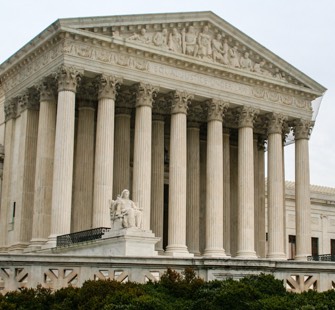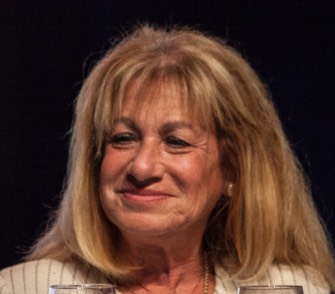SCOTUS takes Samsung appeal in Apple design patent infringement case
 On Monday, March 21, 2016, the United States Supreme Court agreed to hear the matter of Samsung Electronics v. Apple, Inc., a dispute between two giant technology companies that at its core relates to how much Samsung owes Apple for infringing certain design patents.
On Monday, March 21, 2016, the United States Supreme Court agreed to hear the matter of Samsung Electronics v. Apple, Inc., a dispute between two giant technology companies that at its core relates to how much Samsung owes Apple for infringing certain design patents.
So far, these two technology giants have shown little interest in playing nice. A jury found that Samsung infringed Apple design patents, Apple utility patents and also diluted Apple’s trade dresses. The infringed design patents are U.S. Design Patent Nos. D618,677 (“D’677 patent”), D593,087 (“D’087 patent”), and D604,305 (“D’305 patent”), which claim certain design elements embodied in Apple’s iPhone. The infringed utility patents are U.S. Patent Nos. 7,469,381 (“’381 patent”), 7,844,915 (“’915 patent”), and 7,864,163 (“’163 patent”), which claim certain features in the iPhone’s user interface. The diluted trade dresses are Trademark Registration No. 3,470,983 (“’983 trade dress”) and an unregistered trade dress defined in terms of certain elements in the configuration of the iPhone.
Federal Circuit reverses damages award against Cisco Systems
 On December 28, 2015, the United States Court of Appeals for the Federal Circuit reversed a $63.7 million jury verdict against Cisco Systems. The Court, in an opinion by Chief Judge Prost (pictured), concluded that substantial evidence did not support the jury’s finding that Cisco’s devices, when used, perform the “running” step of the asserted claims.
On December 28, 2015, the United States Court of Appeals for the Federal Circuit reversed a $63.7 million jury verdict against Cisco Systems. The Court, in an opinion by Chief Judge Prost (pictured), concluded that substantial evidence did not support the jury’s finding that Cisco’s devices, when used, perform the “running” step of the asserted claims.
Commil owns U.S. Patent No. 6,430,395, which relates to a method of providing faster and more reliable handoffs of mobile devices from one base station to another as a mobile device moves throughout a network area. In 2007, Commil brought a patent infringement action against Cisco, which makes and sells wireless networking equipment. In a first jury trial, Commil alleged that Cisco directly infringed the ’395 patent by making and using networking equipment, and also that Cisco induced its customers to infringe by selling them the infringing equipment. The jury concluded that Commil’s patent was valid, that Cisco was liable for direct but not induced infringement, and awarded $3.7 million in damages. Commil then filed a motion for a new trial on induced infringement and damages, which the district court granted. The second jury concluded that Cisco was liable for induced infringement and awarded $63.7 million in damages.
Willful Infringement Center Stage at Federal Circuit
 The United States Court of Appeals for the Federal Circuit recently issued a unanimous panel decision in Halo Electronics, Inc. v. Pulse Electronics, Inc. This decision may have more far-reaching implications for patent reform than any other decision reached by any court in recent memory. The issue of particular interest in this case was willful infringement, and in a concurring opinion, Judges O’Malley and Hughes wrote that the majority was constrained by the Federal Circuit’s precedent in In re Seagate and Bard Peripheral Vascular v. W.L. Gore, but that recent Supreme Court decisions call into question the continued viability of that precedent. As such, Judges O’Malley and Hughes urged the Federal Circuit to reconsider en banc the standard for awarding enhanced damages under 35 U.S.C. 284.
The United States Court of Appeals for the Federal Circuit recently issued a unanimous panel decision in Halo Electronics, Inc. v. Pulse Electronics, Inc. This decision may have more far-reaching implications for patent reform than any other decision reached by any court in recent memory. The issue of particular interest in this case was willful infringement, and in a concurring opinion, Judges O’Malley and Hughes wrote that the majority was constrained by the Federal Circuit’s precedent in In re Seagate and Bard Peripheral Vascular v. W.L. Gore, but that recent Supreme Court decisions call into question the continued viability of that precedent. As such, Judges O’Malley and Hughes urged the Federal Circuit to reconsider en banc the standard for awarding enhanced damages under 35 U.S.C. 284.
The case came to the Federal Circuit on an appeal by Halo Electronics, Inc. (“Halo”), who appealed from multiple decisions of the United States District Court for the District of Nevada. First, Halo appealed the granting of summary judgment that Pulse Electronics, Inc. and Pulse Electronics Corp. (collectively “Pulse”) did not sell or offer to sell within the United States the accused products they manufactured for delivery to buyers outside the United States. Second, Halo also appealed the granting of summary judgment that Pulse did not directly infringe Halo’s U.S. Patents 5,656,985 (the “’985 patent”), 6,297,720(the “’720 patent”), and 6,344,785 (the “’785 patent”) (collectively “the Halo patents”). Finally, Halo appealed the holding that Pulse’s infringement of the Halo patents with respect to certain accused products that Pulse sold and delivered in the United States was not willful.
11.10.14 | CAFC, Patent Damages, Patent Issues | Gene Quinn
Top 5 Patent Law Blog Posts of the Week
 Today we continue our weekly installment highlighting the best of the patent blogosphere from the past week. If there are any patent blogs you think should be highlighted by our Top 5, please comment on this post and we’ll check them out.
Today we continue our weekly installment highlighting the best of the patent blogosphere from the past week. If there are any patent blogs you think should be highlighted by our Top 5, please comment on this post and we’ll check them out.
1) Director’s Forum: Top Reasons Why USPTO Is Moving to CPC – This post from the USPTO’s Director, David Kappos, discusses the Cooperative Patent Classification (CPC) project, how it is important, and highlights why they are cooperatively pursuing this initiative with the European Patent Office (EPO).
2) Spicy IP: New Patent Prevents Textbook Sharing (in US) – This post discusses a U.S. patent granted to economist Joseph Vogel, professor at University of Puerto Rico-Rio Piedras. The patent restricts textbook sharing amongst students as a means of attempting to cut down on piracy. “The patent is designed to prevent “unauthorized access to copyrighted academic texts is provided in which trademark licenses, discussion boards, and grade content are integrated into a Web-based system.”” (more…)
06.15.12 | posts | Mark Dighton


No Comments
04.4.16 | patent infringement, Patent Issues, Patent Litigation, Supreme Court Cases | Gene Quinn